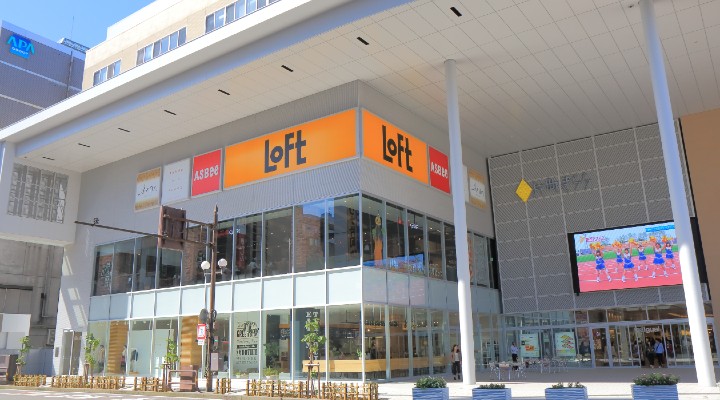Japanese retail is not only good on its own patch – you will find some of the most attractive stores in the world here – but when Japanese concepts have travelled to other countries, they have generally gone over well. To illustrate, Muji is in 31 countries, Uniqlo is in 25, Daiso in 24, and Family Mart is in eight. (Family Mart’s fiercest competitor in Japan, 7-Eleven, is universal but it originated in the US, becoming ‘Japanese’ only in 1991.) In each case, the arrival of these brand
ands in new markets has generally been greeted with huge enthusiasm. Even department stores like Takashimaya, Isetan and Aeon have had a fair measure of success in non-Japan Asia, notwithstanding their recent problems due partly to the pandemic.
The reasons for the appeal of Japanese retailers are easy to understand: they have good store designs, often with small footprints that make tidy, efficient use of space without appearing cluttered. Products are usually priced sharply, are innovative, functional, trendy, and novel. The icing on the cake is that the Japanese themselves are big travellers and shopping is one of their favourite holiday activities, so Japanese retailers overseas have catered successfully to tourists. (Sometimes, unfortunately, they have become overly dependent on them. Isetan is a case in point. When Japanese tourists stopped coming to Thailand because of Covid-19, Bangkok’s 28-year-old Isetan store closed its doors forever.)
Loft, a dubiously classified ‘home furnishings’ concept is an idea that should have travelled but hasn’t. It only has two licensed stores outside its native Japan – in Bangkok’s Siam Discovery and IconSiam malls. Loft checks all the boxes for a successful concept if placed in the right location. It isn’t going to work on every street corner, but it’s something that goes well in higher-end shopping malls and streets in urban locations.
Loft is owned principally by Sogo & Seibu Co. Ltd, which is a division of Seven and I, the company that owns 7-Eleven. (As Inside Retail reported on February 4, Seven and I is looking at options for divesting itself of the Sogo & Seibu unit.)
Sales for Loft in the year ended February 2022 were 102 billion yen (approximately $1.1 billion). It has close to 5,000 employees.
Its flagship in Shibuya, Tokyo, has seven levels, but the units in Siam Discovery and IconSiam are compulsory viewing if you want to see what it might look like as an edited-down concept outside of Japan. And even in the smallish space it occupies in those locations, the range of merchandise is formidable.
The Loft experience
One’s eye is first drawn from a distance by the bold yellow-on-black signage. The name Loft inspires thoughts of furnishing an edgy urban apartment, but it turns out not to be very much like that. Here, younger visitors find not only cool things they came looking for, but also things they might not have known they needed. Loft is not a home furnishings store in the conventional sense. It’s better characterised as a design-rich variety store for the young. (Oddly, the online store directories for Siam Discovery and IconSiam classify it as a “Gadget” shop.)
It begins with a small exhibit called “Summer”, offering a variety of potentially useful outdoorsy, travel-related items. From there, the visitor can wander around browsing an eclectic slew of categories, including stationery, a “Sticker House”, collectables, a huge collection of Gacha figurines, oral care, health and beauty accessories, jewellery, travel goods, and an entire corner devoted to Care Bears.
The Loft stores in Bangkok, like so many others, took a beating from lockdowns and border closures from 2020 through early 2022. Tourists are coming back now, though, and Loft will appeal not just to Japanese visitors but also to tourists from other, particularly Asian, countries. In Thailand, entry restrictions have been eased in small steps over the past few months and it is not likely that any will remain much after mid-year.
That’s the edited version of Loft, but how about the flagship version? In Shibuya, Loft occupies a seven-storey building. Stationery and gift items dominate the lower floors, while home furnishings, health and beauty, small electronics and other categories inhabit the floors above.
The merchandise here is priced for the budget-conscious and a visit can be a one-stop trip both for self-indulgence and buying souvenirs and gifts to bring back to the folks at home.
The opportunity beyond Japan
Loft is too rich a concept to be limited to just Japan and a couple of lonely outposts in Thailand. Moreover, opportunities for growth within Japan itself are limited by saturation, a strong propensity to save, and adverse demographics.
Japan experienced sluggish retail sales growth again in the first quarter of 2022, its Ministry of Economy, Trade and Industry reports. Sales were up 0.4 per cent compared with the same quarter a year ago, although the bar was relatively high because January-March 2021 had shown a rise of 3.9 per cent over January-March 2020. As a result, retail sales in 2022 are on track for 5 per cent growth over 2019, the last normal year of trading. Japan experienced moderate deflation in 2021 and inflation has been very moderate so far in 2022 (the most recent CPI increase was 1.2 per cent, year-on-year, in March) so 5 per cent sales growth might be considered something of a win for the retail industry.
How might the divestiture of Sogo & Seibu by Seven and I affect Loft? Unfortunately, not much, if it remains under the Sogo & Seibu banner. Typically, cutting-edge specialty concepts under the wing of legacy general merchandisers thrive only when they are cut loose. Loft should be well known outside of Japan by now and the fact that it is not yet more geographically dispersed than it is, particularly considering weak growth prospects inside Japan itself, suggests that something is amiss.
An opportunity missed? The fact that Loft’s only two stores outside Japan are in such cutting-edge malls suggests that is the case.

